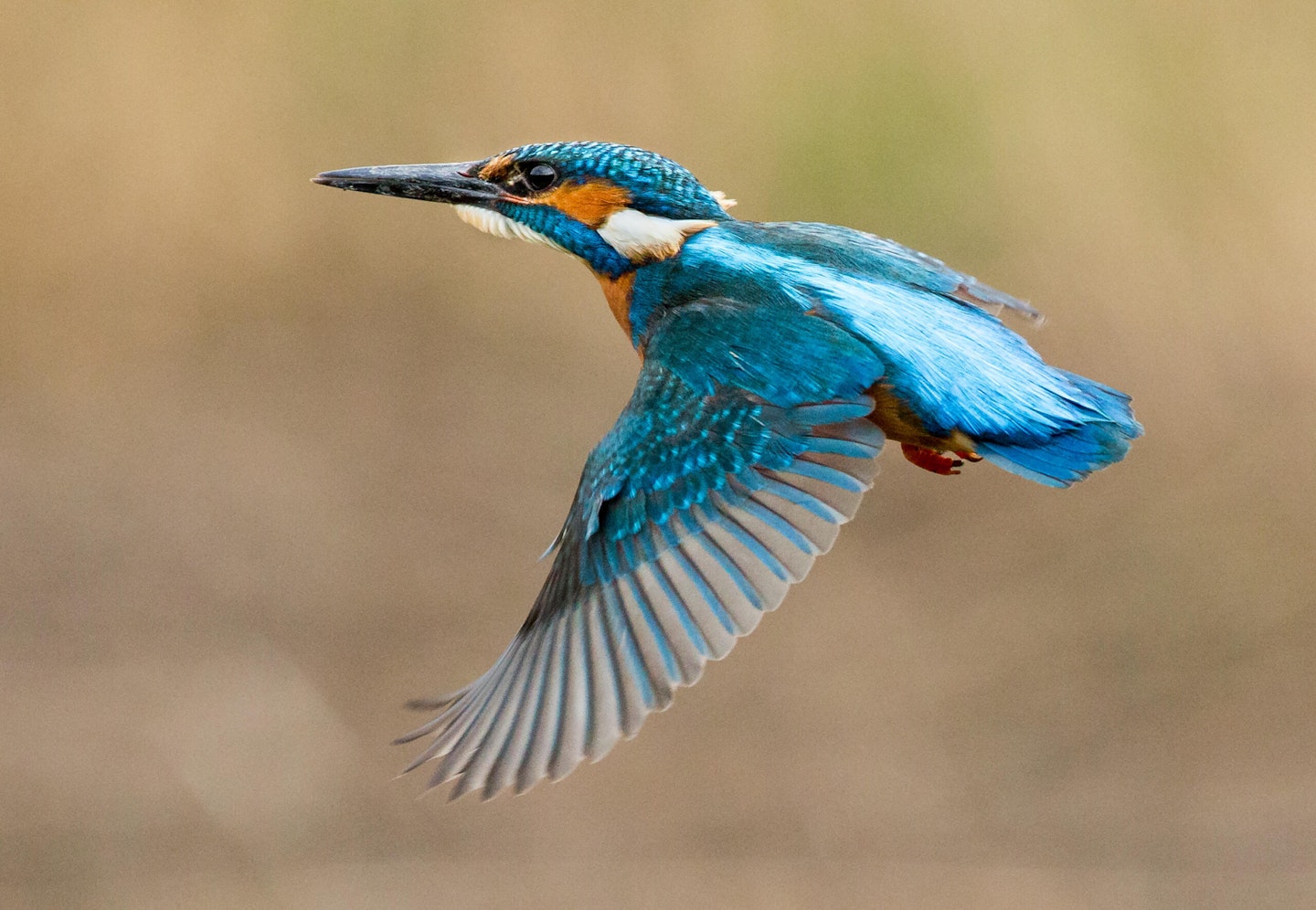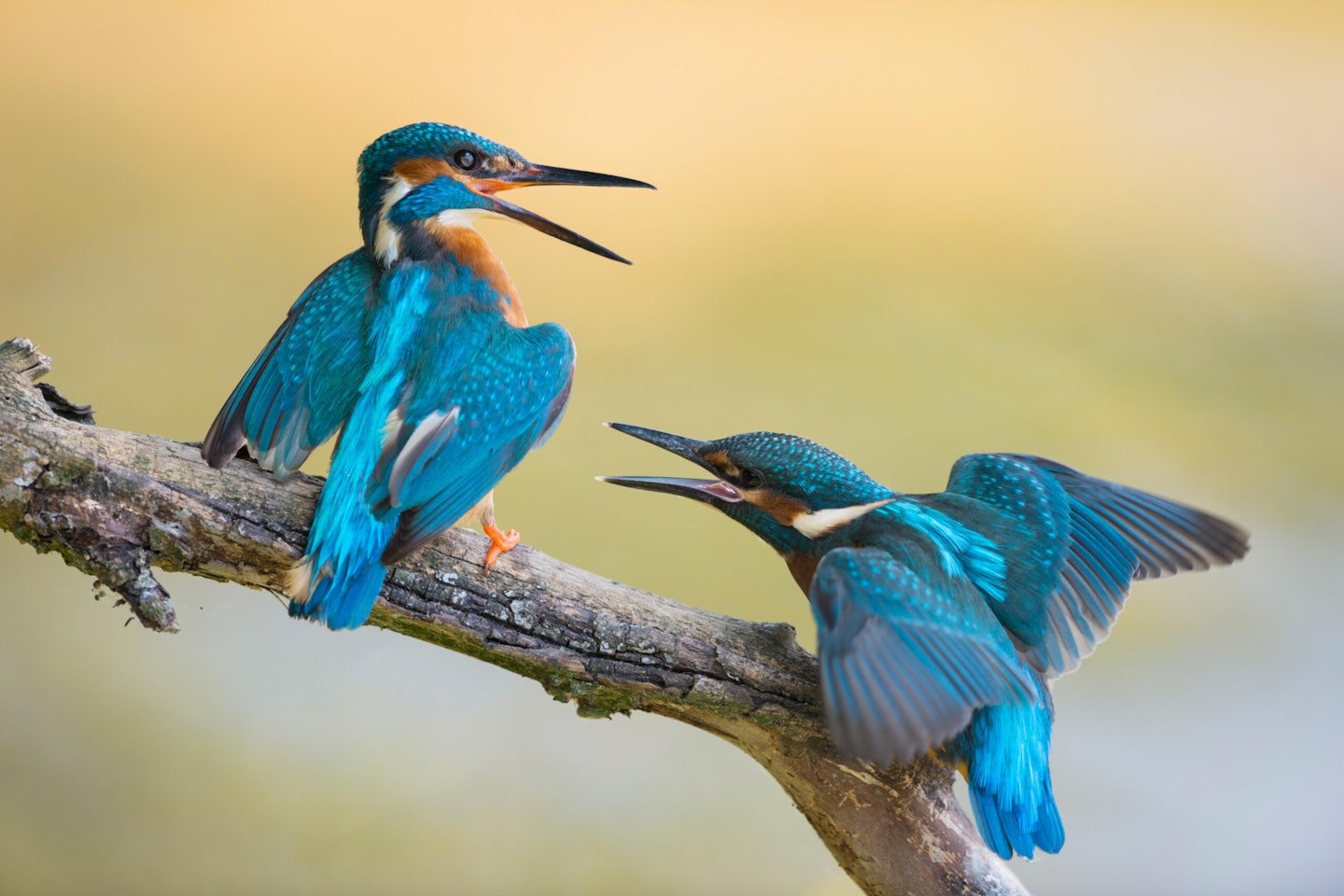It was a bitter late autumn day with a gale blowing so hard that any words you tried to speak were whisked unceremoniously from your lips and deposited as junk in the outbox of the airwaves. I caught myself murmuring: “There shouldn’t be a Kingfisher here.”
At this moment, the Kingfisher concerned would probably have echoed the sentiments. It was perched on what looked like a tin can, beside the meandering creek of an estuary at low tide. It was hunkered at the bottom of a mini-downland of raised mud just above the water level, doing its best to find shelter.
Its neighbours were Redshanks, similarly huddled and hunkered under the brow of mud. They should have been feeding on the super-fertile shallows along the creek, but, in the howling westerly, they risked being blown off their feet.
Their bejewelled neighbour risked being blown to oblivion. The wind ruffled contemptuously at the gorgeous plumage, still colourful through a rain-lashed telescope lens. The dandy looked incongruous here, like a glamorously dressed woman disgorged from a nightclub in a freezing dawn.
The last time I had seen a Kingfisher looking so out of place was many years ago, when I was birding in the middle of an oak woodland. It was one of those days when all the trees seem bored of summer, the spring green long faded and the hum of activity hushed.
There came the loud, whistling call and the familiar cerulean flash of diminutive Kingfisher-dom, blue out of the blue. There was no stream through this wood, nor any water within a 20 minute walk. Yet, there was no doubt about the bird’s identity, only incredulity in its wake. These observations, taken in isolation, would prove nothing about Kingfishers except that, in common with any bird species, they can surprise us. However, the truth is that neither observation would even raise the eyebrows of a Kingfisher expert.
To us, an estuarine Kingfisher might seem out of place, but it is our expectations that are wrong. Kingfishers are routinely found on estuaries. And Kingfishers also wander during the late summer, when they can turn up in the middle of woods and other peculiar places.
Kingfishers suffer from Breeding Bird Syndrome, when our perceptions of a species are wrapped up almost entirely in their summer programme. The same applies to Swifts, which probably spend far more of their lives flying over Giraffes than they do over English cricket pitches, and Puffins, which spend the smallest fraction of their lives carrying sand-eels in their bills, while endless days they are floating in the open ocean. We expect to see Kingfishers by glinting rivers, on a lazy bend with luxuriant growth and dancing mayflies, not on a windswept estuary.
KINGFISHER LIFE IN THE 'OFF-SEASON'

None of this takes into account a Kingfisher’s life in the off-season, when everything from the weather to the social climate is different and unsettled. For one thing, all the youngsters have been booted out of their parents’ territories and are on the look-out for a place that they can defend for their own.
At the same time, adults evacuate from territories that cannot sustain them in the winter months, such as small brooks in the uplands. A few individuals might even enter the country from abroad. All are seeking the nirvana of a smooth, slow-flowing stretch of river where the water is shallow and productive.
Demand outstrips supply, the best areas are quickly bagged and there is an almighty halcyon reshuffle. Displaced birds fly hither and thither, some just a short distance, some for much longer distances (250km has been recorded). Some individuals find themselves in what might almost be termed experimental territories. They try out fishing in garden ponds; birds plant themselves in brooks in the middle of woods; and a good many are forced into salt water, to estuaries, harbours, even to rocky shorelines, where they fish the rockpools like human toddlers.
These places seem to be a far cry from the ideal, but it is not as though these birds are landing on Mars. Kingfishers eat fish, and their skills are fully translatable from fresh to salt water. British Kingfishers are actually quite one-dimensional in their feeding behaviour – it is ‘dive into water to snap up fish’ or nothing (one exhaustive study on nearly 17,000 prey items found that only 0.07% were non-piscivorous.) The birds are perfectly capable of diving after a brief hover, or even plunging in straight from horizontal flight, but their method is really very simple. Would they need to adapt much to the supposedly sub-optimal habitat of salty or brackish water?
The real question is, perhaps, why don’t we see many Kingfishers on our estuaries and coasts? There are plenty of fish in the sea. If you look at the Kingfisher family as a whole, quite a number of species are coastal specialists, and a few are routinely seen by the beach – I watched a Pied Kingfisher accompanying gulls and terns on a beach off southern Israel just recently.
The same species has been recorded three kilometres out to sea. Even our own species of Kingfisher may show different behaviour abroad, where it occurs east to Japan; it often occurs in mangroves, for example.
Presumably something isn’t quite right, because otherwise we would all see these birds more frequently on our visits to coasts. Perhaps there isn’t enough shelter, or there is too much disturbance from other bird species?
Perhaps the fish themselves stay deeper in the water and are more difficult to catch. There are certainly many more foragers on estuaries than along rivers. But, for the moment, we can still be surprised to see these gaudy birds there.
KINGFISHER QUIRKY BEHAVIOUR
A couple of recent studies have unveiled another interesting quirk of Kingfisher non-breeding behaviour, one that I haven’t ever witnessed myself. It throws a harsh light on the difficulties young birds face when they initially leave their birthplaces, and suggests a novel way of dealing with it. It seems that, on occasion at least, siblings settle in a new place together and look out for each other.

On a river in Poland (ie central Europe), the observers found that, while adult Kingfishers always dispersed singly to their winter territory, in four out of 24 cases, juveniles came in twos.
Under the pressure of competition from other birds using the river, youngsters were often displaced from the first few territories into which they had settled, only remaining for a short time.
However, when the birds arrived as pairs, they occupied the best territories and remained for a much longer period of the non-breeding season. Working co-operatively, birds making up these pairs were able to fight off the competition for longer. It is believed that such pairs are probably from the same family.
In the Kingfisher family, blood relatives often occur in permanent groups (kookaburras, for example), so perhaps European Kingfishers are exhibiting a family trait. The makeup of these pairs (and occasional small groups) is still not fully understood, though, so it could be a fascinating area of study.
For now, though, we can all contemplate an even stranger sight than a Kingfisher cowering in the bowels of a bitter winter estuary – two Kingfishers cowering together.
KINGFISHER FACTFILE:
Scientific name: Alcedo atthis
Length: 17-19.5cm
UK numbers: 3,800-4,600 breeding pairs
Habitat: Alongside still or slow-flowing water
Diet: Fish and aquatic insects
